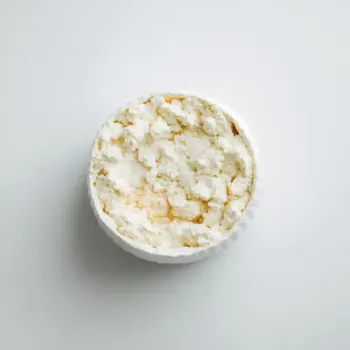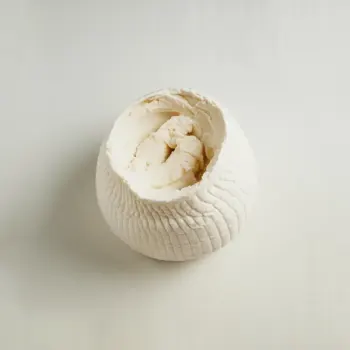Cottage cheese is a low-fat, high-protein curd cheese with a lumpy texture, while ricotta is a creamier, sweeter whey cheese used in a variety of Italian dishes. Both can be used in cooking, offering distinct textures and flavors for desserts, dips, and baked meals.

Cottage cheese is a fresh cheese curd product with a mild flavor. It's made from the curds of pasteurized cow's milk and comes in various milk fat levels. Its texture can be creamy to lumpy, and it's known for its low-calorie count and high protein content.

Ricotta cheese is an Italian whey cheese made from the leftover whey from the production of other cheeses. It has a slightly sweet taste and a creamy, but slightly grainy, texture. Ricotta is popular in many Italian dishes, both sweet and savory.
Cottage cheese has a lumpier texture and a tangier flavor compared to the smoother, sweeter ricotta. It's also lower in fat and calories, making it a healthier option. Ricotta, sourced mainly from whey, has a creamier texture and a delicate sweetness that lends itself to desserts as well as savory dishes. The two cheeses also differ in moisture content, with ricotta being wetter.

Your ultimate Recipe Box, Meal Planner, and Cooking Class all in one
Best used in lasagna, baked pasta, and casseroles. It offers a heartier texture and can be used to reduce calorie count. Expect a fluffier consistency, and be sure to drain excess liquid if needed. Ideal for stuffed shells, manicotti, and cheesecakes. Ricotta provides a rich creaminess and is excellent for creating a smooth filling. Its moisture can contribute to a softer texture in baked goods.
Works well in herbed spreads for crackers and sandwiches. Blending it can smooth out the lumps, and its tanginess can be a unique twist on traditional spreads. Perfect for sweet or savory dips due to its smoothness. When whipped, ricotta becomes light and spreadable, great for a cannoli filling or as a dip for fresh fruit.
Can be used in cheesecakes and pancakes. It gives a lighter, protein-rich alternative, though it may not provide the same smoothness as ricotta. The go-to for traditional Italian desserts like ricotta cookies or classic cannoli. It offers a subtle sweetness and creamy texture that's hard to replicate with cottage cheese.
Cottage cheese is higher in protein and lower in fat and calories, making it a healthier option for those watching their intake.
| Nutrient | Cottage Cheese ( per 100g ) | Ricotta Cheese ( per 100g ) |
|---|---|---|
| Fat | 4.3g | 13g |
| Sodium | 364mg | 84mg |
| Calcium | 83mg | 207mg |
| Protein | 11.1g | 11.3g |
| Calories | 98 | 174 |
| Carbohydrates | 3.4g | 3.2g |
Yes, cottage cheese can be used as a substitute for ricotta in lasagna. The texture will be slightly different, and it's recommended to drain any excess liquid or blend it to achieve a smoother consistency.
Ricotta is generally preferred for its smooth texture and slight sweetness, making it better for desserts, while cottage cheese can be used for a healthier alternative in baked savory dishes.
They can be substituted for each other in many recipes, though adjustments may be needed for texture and moisture content.
Cottage cheese is typically lower in calories and fat and higher in protein, making it the healthier choice for those looking to manage their intake.
To mimic ricotta's flavor and texture, blend cottage cheese until smooth and add a touch of cream or whole milk to achieve the desired creaminess.